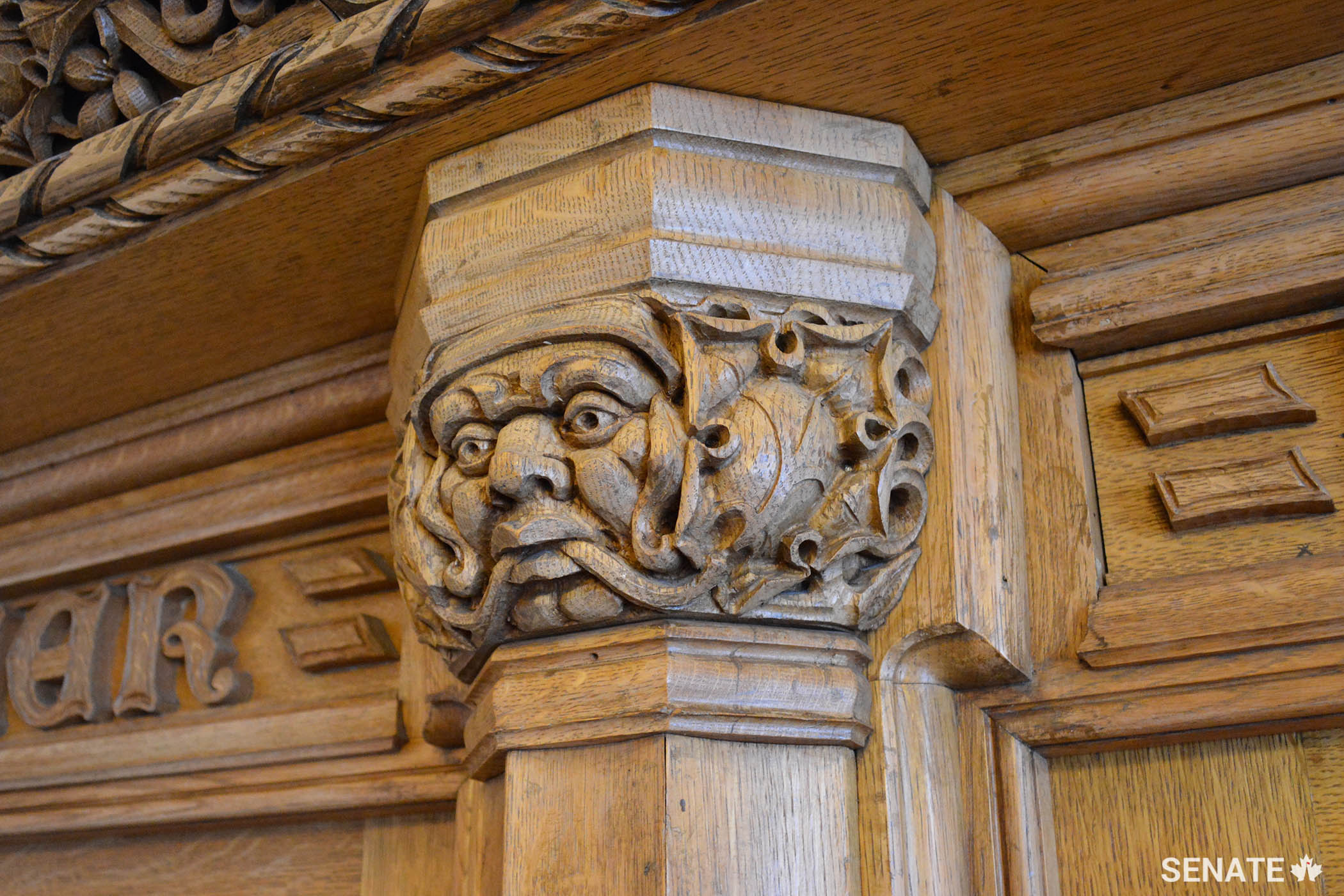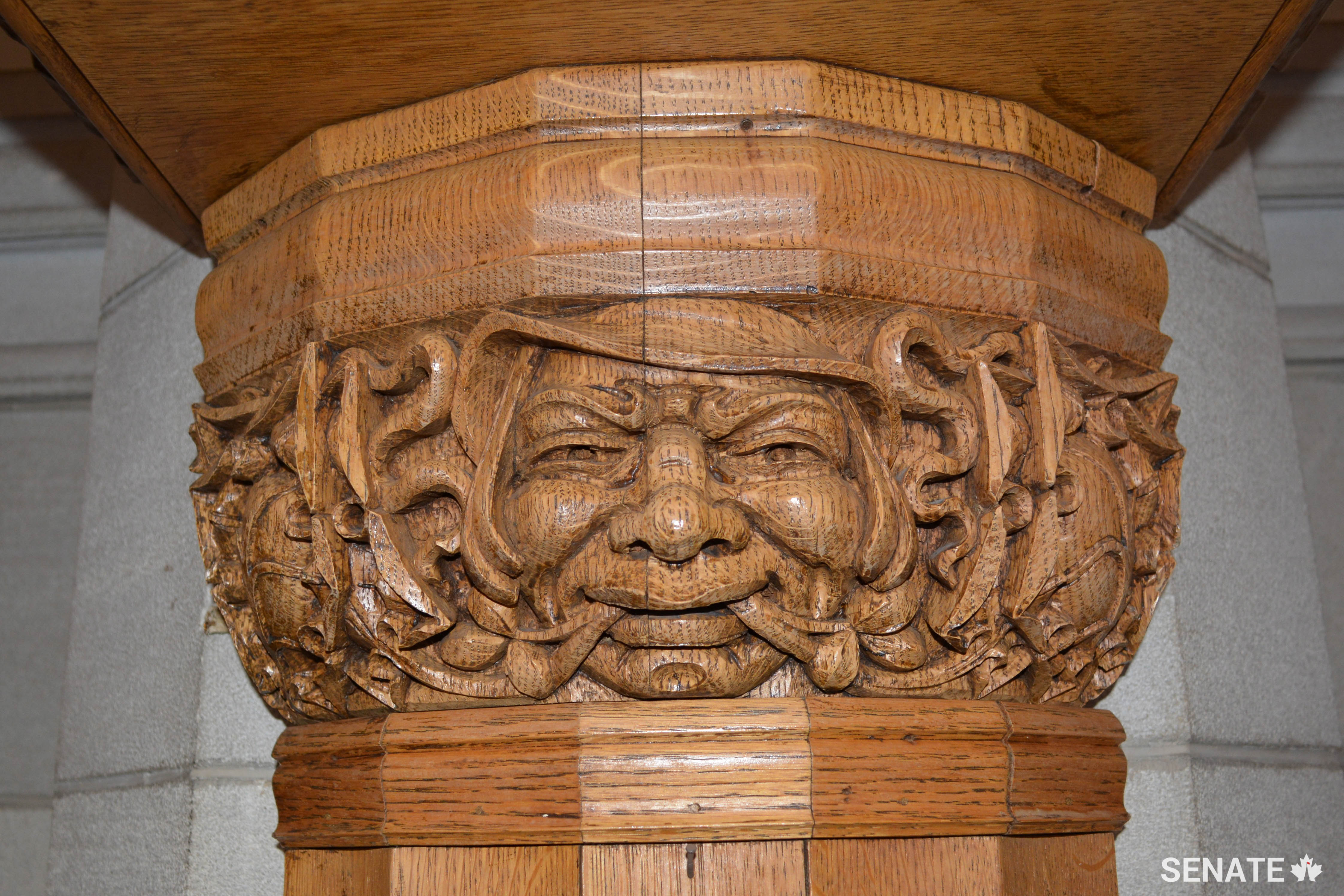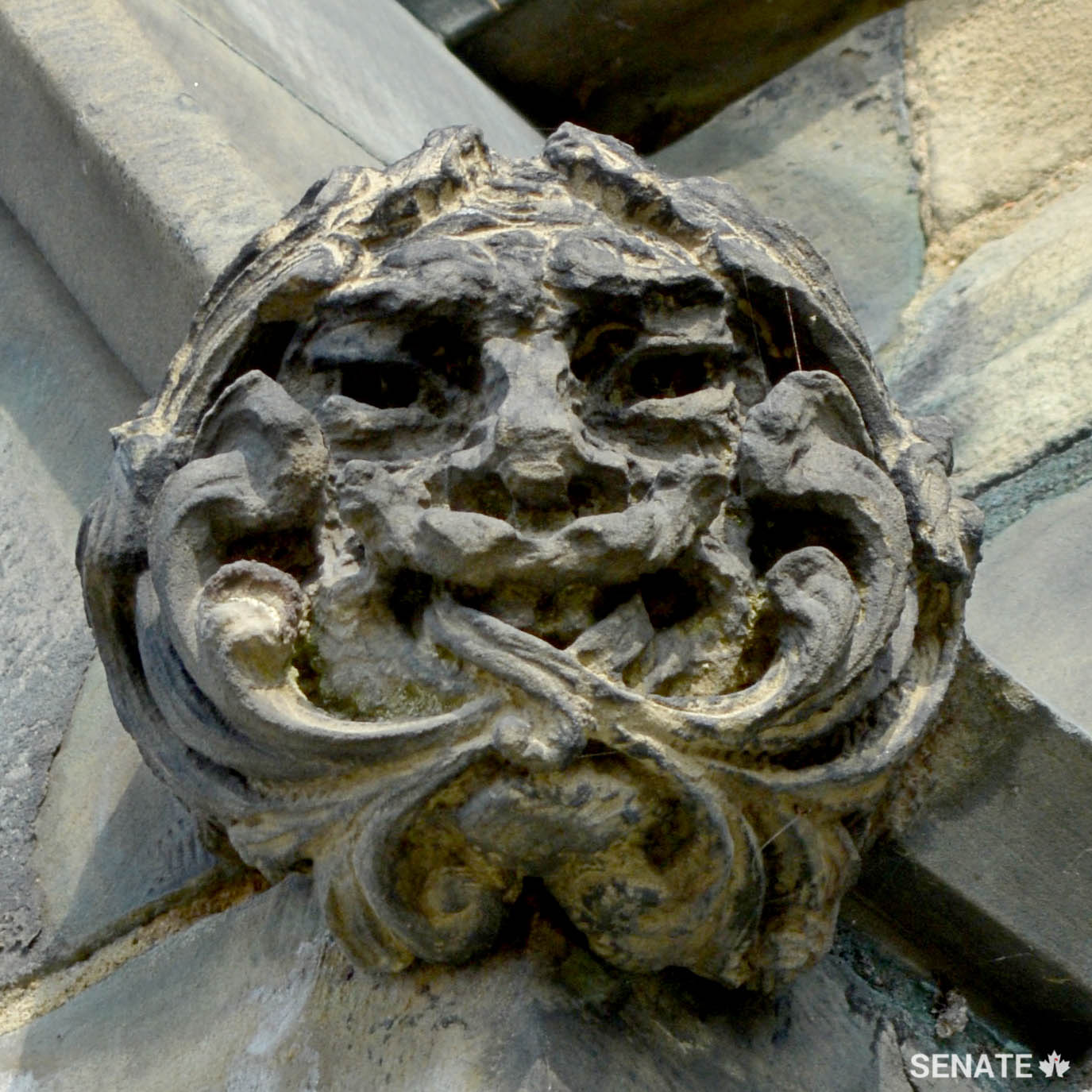Untangling the mystery of Parliament Hill’s Green Man

Next time you visit Parliament Hill, take a close look around — you’re being watched.
If you catch a glimpse of a leering face staring out from a thick curtain of foliage, you’ll know who it is — the Green Man. You can see him all over Centre Block, East Block and West Block, a mysterious carved face sprouting foliage from his mouth, nostrils and ears, and sometimes from the corners of his eyes.
The character is centuries old and is a staple of medieval buildings, particularly churches, abbeys and cathedrals.
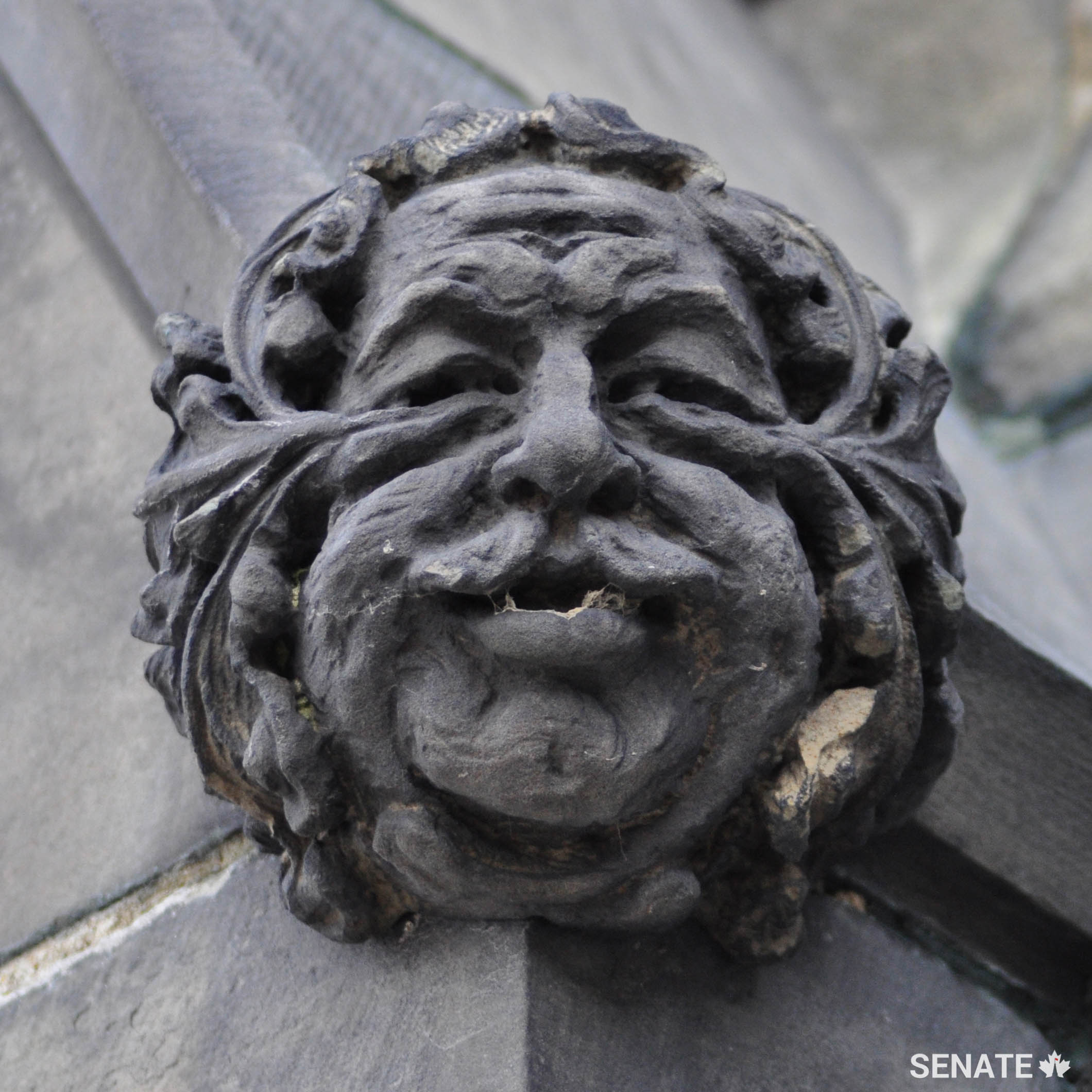
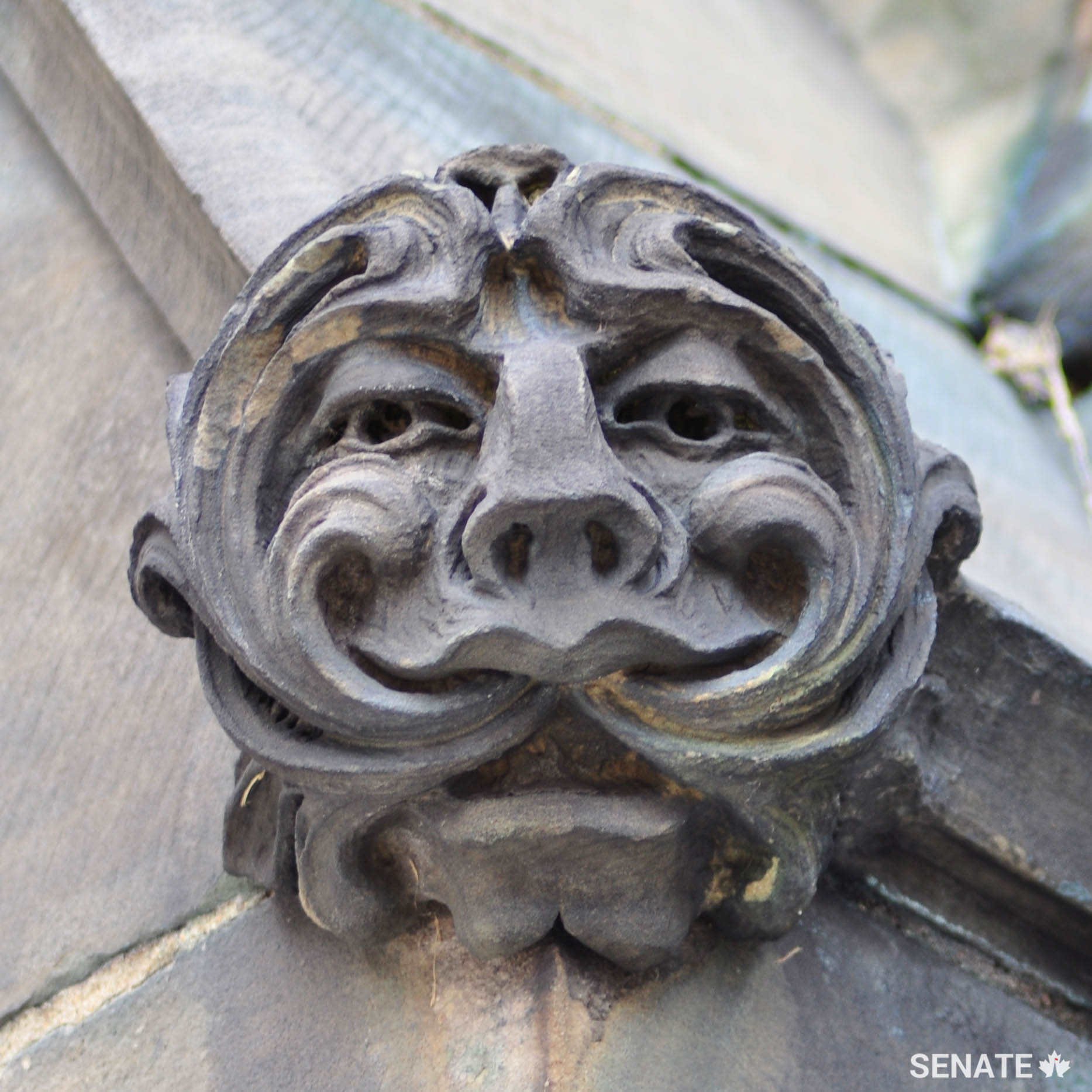
“The Green Men on Parliament Hill are part of an ancient tradition,” said Dominion Sculptor Phil White, Parliament’s official carver and custodian of its 150-year-old sculptural program.
“There was a period in medieval Europe when Christianity had a firm foothold but society still had strong Celtic roots. This was a way to bring pagans into the Church — indoctrinating them by absorbing their customs.”
The Green Man flourished in the 12th and 13th centuries and experienced a revival in the 19th, when Britain went through a building boom just as the Romantic era was making the Middle Ages fashionable again. An entire generation of architects, stone masons and artists mastered the skills of their 13th-century predecessors as Gothic Revival churches and government buildings sprang up all over northern Europe. The European-trained carvers who worked on Parliament Hill in the 1800s and early 1900s brought the tradition with them across the Atlantic.
But who is the Green Man? Is he purely decorative or is there a deeper symbolism to the character?
Dozens of books and essays and hundreds of magic-and-mysticism websites have tried to unravel the mystery.
Some identify the Green Man as a personification of nature, symbolizing spring renewal as well as the menace of the primeval forest. Others go to great lengths to identify him with gods of earlier religions — with Silvanus, the Roman guardian of woods and fields, or with the Celtic nature deity Cernunnos.
Still others associate him with literary figures such as Robin Hood, Puck or the supernatural antagonist from the Arthurian romance Sir Gawain and the Green Knight.
The Green Man remains an enigma. Is he an ancient deity reinterpreted through the ages or simply a fanciful ornament that generations of sculptors have emulated for centuries?
“People try to read a lot of meaning into these figures. Often it’s just about the carver having fun,” Mr. White said.
“You’re spending a lot of time at this block of stone, so you want something that amuses you while you’re working.”
See the Green Man — and other curious carvings in Centre Block — by taking the Senate Virtual Tour.
